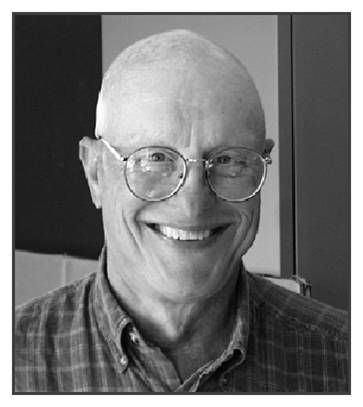by Keith Killingbeck

“. . . for pioneering research on the biology and ecology of a diverse array of vertebrate species, and for inspiring students to understand and appreciate the natural world.”
So what does a hair-challenged young man growing up on the outskirts of Chicago in Cicero, Illinois keep in his basement to impress friends and family alike? Shoe boxes overflowing with baseball cards? Pilfered Burma Shave signs? An extensive collection of toupees for the Al Capone look? Not if you were Bob Shoop. Decorating the walls of the basement in the Shoop home were jars and jars of preserves. Not pickles and jellies mind you, but snakes and lizards. Even better yet were the live snakes he sold to, and traded with, the director of the Lincoln Park Zoo. That director just happened to be none other than Marlin Perkins. What a start to a career in herpetology!
Bob took his penchant for biology to Southern Illinois University where he earned a B.A. in·1957. Perhaps deciding that there were just too few herps in Illinois, Bob headed south to the bayou country of Louisiana and took M.S. and Ph.D. degrees from Tulane University. Three years before finishing his Ph.D., Bob received national recognition as the recipient of the 1960 Stoye Award in Herpetology from the American Society of Ichthyologists and Herpetologists. Thar award is bestowed on the student presenting the oral herpetological research seminar judged to be the best that year.
Wellesley College became his professional academic home in the 1960s where, as former student and internationally known marine biologist Tundi Agardy recalls, Bob “was able to make the sometimes far too serious and self-absorbed Wellesley women realize that the best way to learn is to enjoy oneself and let one’s own curiosity create a thirst for knowledge.” As much fun as it was for Bob to challenge coeds of the rich and famous, the hole in his Wellesley donut was the complete lack of a graduate program. That hole was filled in 1969 when Bob joined the University of Rhode Island (URI) as an associate professor in the Department of Zoology.
What followed was a career at URI that spanned 29 years, 24 graduate students (some who earned both M.S. and Ph.D. degrees under Bob’s tutelage), more than 60 professional publications, innumerable hours of field work, 11 different courses taught, countless research seminars, and enough Friday afternoon Shoop Sessions to make an indelible impression on scores of students and faculty alike. To those of you lucky enough to have attended even one of the legendary Shoop Sessions, what is the first recollection that comes to mind? Right . . . Mystery Meat. Science was certainly digested at these gatherings in Bob’s lab, but it was digesting, and identifying, the Mystery Meat that was the people magnet. Roadkill was often a staple. Opossum. Owl. Anything to goad the weak-at-heart.
Even after retiring, in 1998, Bob continued to write and pursue research with Carol Ruckdeschel, the talented biologist with whom he had shared his life since the early 1980s. Together they lived on the offshore slice of southern landscape they adopted as home: Cumberland Island, Georgia. It is here that they founded, and literally built, the Cumberland Island Museum. Preserved herps reminiscent of a long-ago Cicero basement grace the shelves, as do one of the best collections of sea turtle skeletons in the world. Even on Cumberland Island the long-standing tradition of serving Mystery Meat continued. My favorite entry in the guest cabin logbook on Cumberland rejoiced over the hospitality shown the visitor but concluded with an apology; “sorry, I just couldn’t eat the porpoise tongue.”
Biological research was at once vocation and avocation for Bob. The tremendous breadth and depth of his life’s work reflected that fact. Taxa that were the focus of his research papers and books included an amazing array of vertebrates: snakes, salamanders, eels, sunfish, shrews, wood storks, pelicans, opossums, gray fox, alligators, and both freshwater and sea turtles. Processes that were at the heart of his research included reproduction, migration, homing behavior, home range size, nesting, predation, and physiological responses to anoxia. The research on annual migratory patterns and population dynamics of salamanders Bob pioneered at the URI Alton Jones Campus was among his best.
To say that Bob distinguished himself as a naturalist is only part of his story. He had a special way of engaging students in the life of natural history. His URI class field trips to the southeastern United States are the topic of countless stories. His love of, and penchant for, a good gag or a sharp barb endeared him to all who had the good fortune to know him. Former student Jeff May, an undergraduate in the Introductory Ecology class Bob and I used to team-teach, recently concluded that Bob “seemed to have a joie-de-vivre beyond the usual allotment.” Way beyond.
When Bob died this past November, he left a legacy of good science, good teaching, and good humor. He was a scientist of substance and a person of substance who never took himself, or the world, too seriously. His life, well-lived, made him an unforgettable friend, mentor, colleague, and now, 2004 RINHS Distinguished Naturalist.